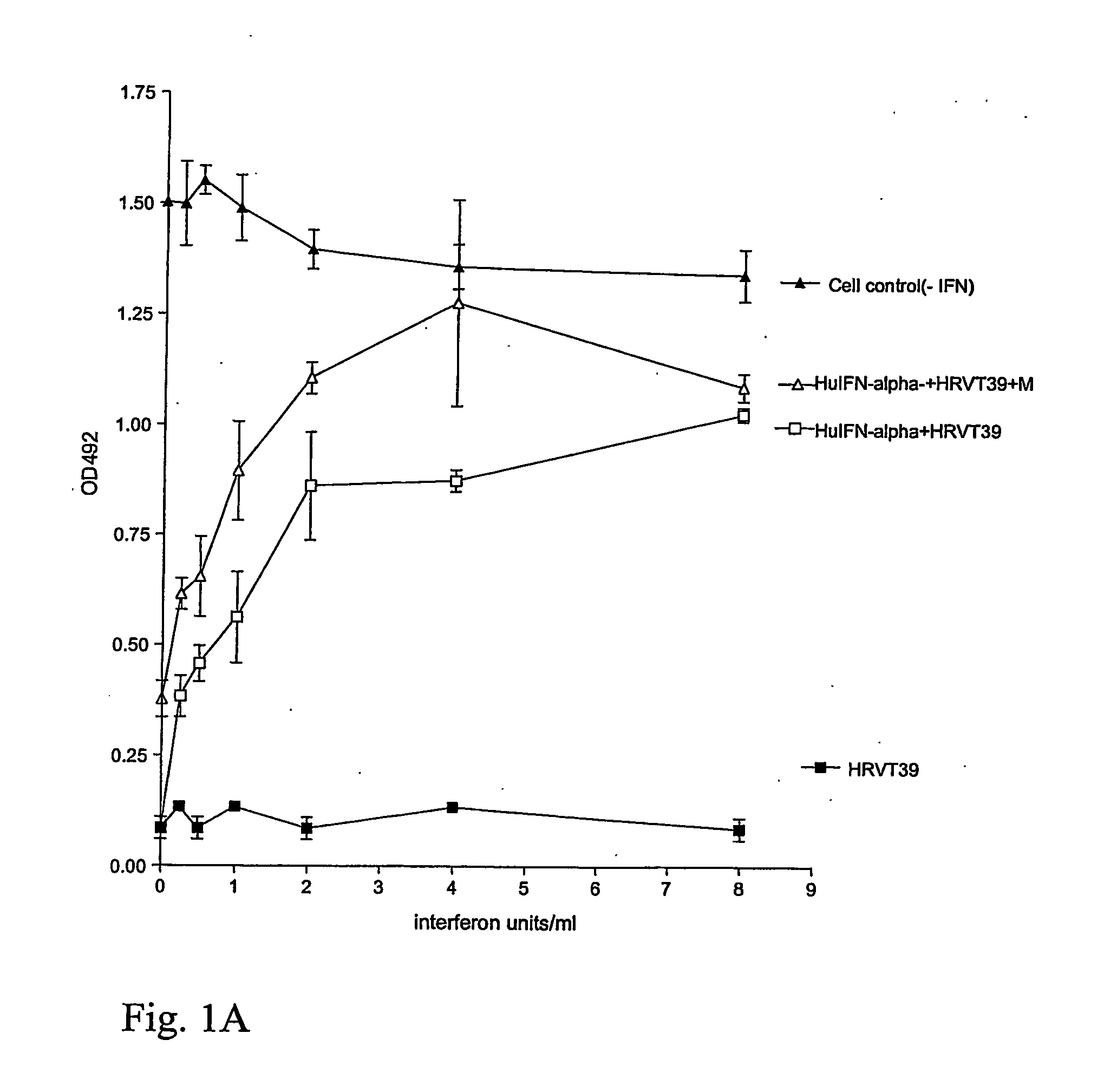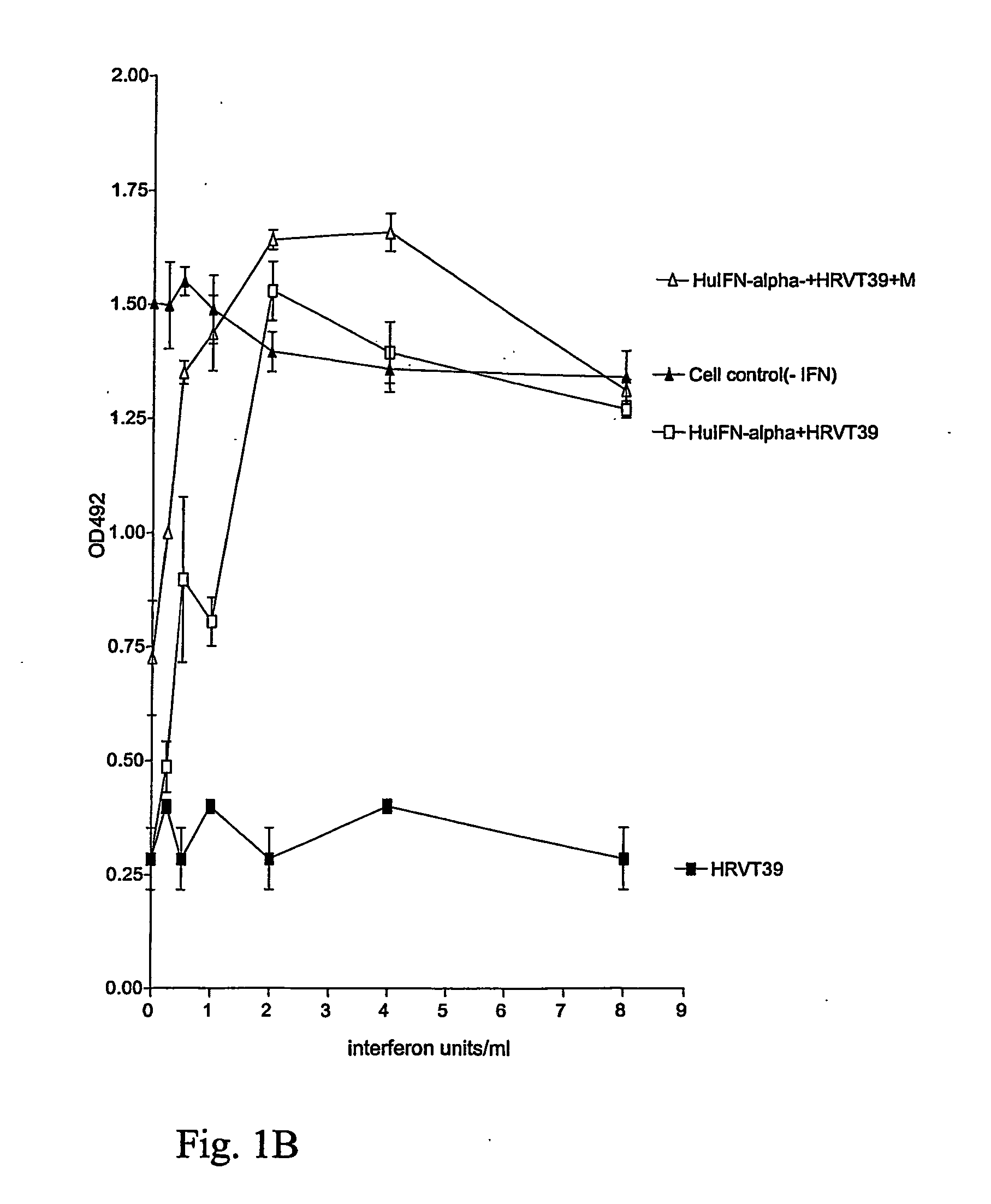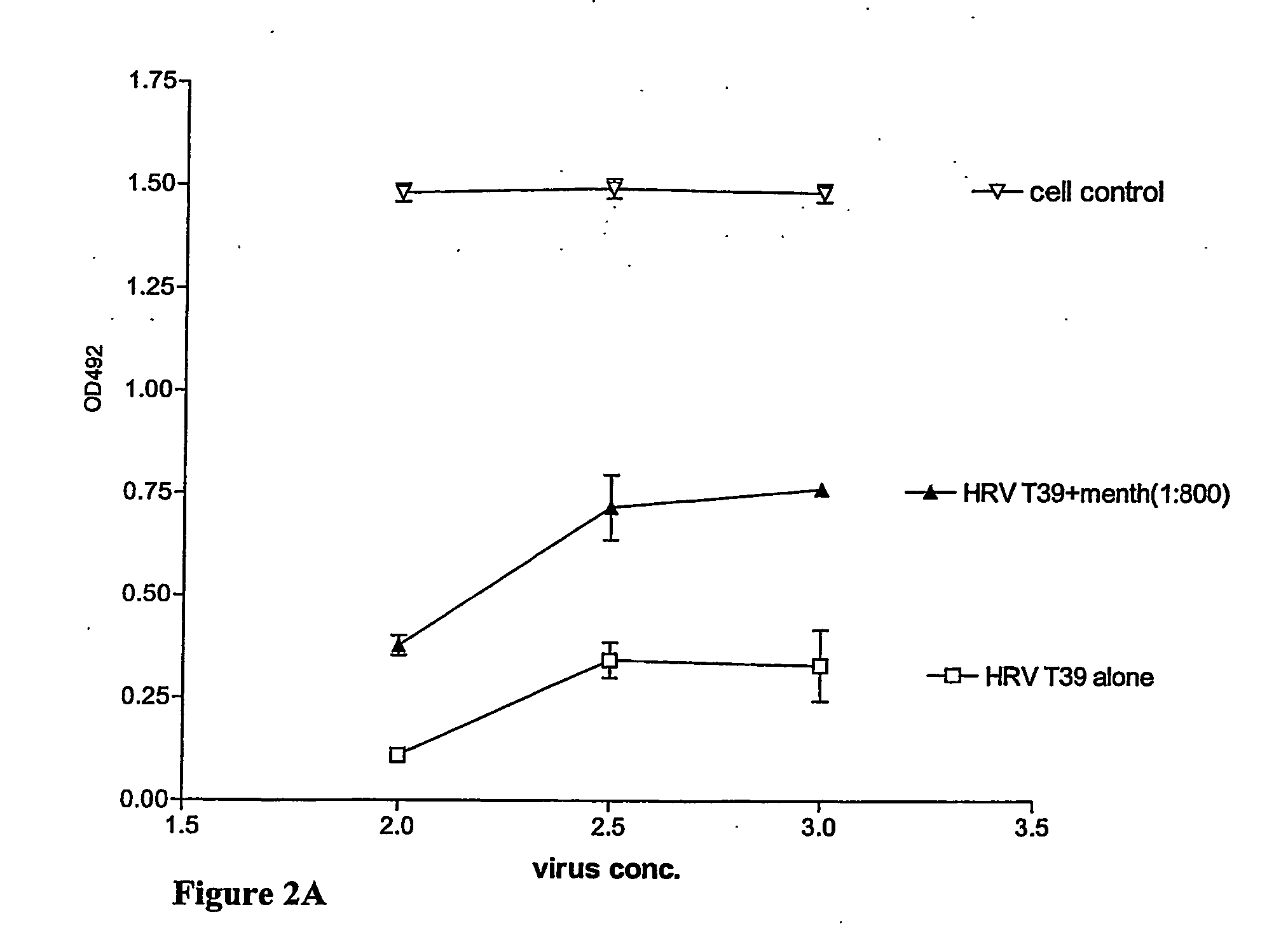Pharmaceutical compositions comprising flavonoids and menthol
- Summary
- Abstract
- Description
- Claims
- Application Information
AI Technical Summary
Benefits of technology
Problems solved by technology
Method used
Image
Examples
example 1
[0208] Methods
[0209] Virus Titrations
[0210] Rhinovirus 1A, rhinovirus 15 and rhinovirus 39 were titrated according to the tetrazolium salt (MTS)-method (Berg et al., 1990) (Hansen et al., 1989)). WISH cells were seeded in a micro tray at 3000 cells per well and incubated at 37° C., 5% CO2 overnight; the following morning the medium was replaced with 10-fold dilutions of either rhinovirus 1A, rhinovirus 15 or rhinovirus 39, respectively, in fresh medium and the trays were incubated 4-5 days at 33° C.; a microscopical examination confirmed that the CytoPathogenic Effect (CPE) was fully developed (CPE equal to 100%). The minimal amount of virus (i.e.: the highest dilution.of the virus in question) which produced 100% destruction was used as “challenge virus” in the subsequent experiments. To quantitate the CPE in terms of % destruction, MTS (Berg and Owen, 2003) was added to all cultures and after 3 h incubation at 37° C. (without CO2) the trays were read in a scanner as previuosly d...
example 2
FIGS. 1A, 1B, 2A, and 2B
[0213] Experiment: 1 g pure Menthol(−) from Sigma was dissolved into 3 ml 100% Ethanol and kept at 4° C. (Menthol stock solution). Japanese peppermint oil (PPO) was produced each time from the bottle(stored at 4° C. from the supplier (local hospital pharmacy(RH)). The two stock solutions were used at dilutions (final) as indicated in the text / figures.
[0214] 1:800 dilutions of Menthol(−) were added to interferon dilutions on confluent monolayer cultures yielding the interferon units / ml as indicated in FIG. 1A and 1B and rhinovirus, RHV-T-39 was added at 10−2 dilution (FIG. 1A) or 10−2,5 (FIG. 1B) diluted from a virus stock preparation of RHV-39 and the cells were incubated at 33° C. for 3-4 days until control cultures infected with the virus alone yielded 100% destruction as seen in a microscope; at that time MTS (3-[4,5-dimethylthiazol-2-yl]-5-[3-carboxymethyloxyphenyl]-2[4-sulphonyl]-2H-tetrazolium) / PMS (phenazine methosulfate) was added and the dehydrogen...
example 3
FIG. 3A, 3B, and 3C
[0221] To compare Japanese peppermint oil (PPO) with menthol a series of analog experiments as described in the preceding paragraphs were executed: monolayers of WISH cells in microtrays were titrated with rhinoviruses in the presence or absence of PPO at various dilutions in PBS (phosphate bufferede saline) of standard stock solutions of Japanese Peppermint Oil in 95% alcohol (supplied from the Rigshospitalets Pharmacy, Denmark) without any success as it turned out that PPO (diluted 1:100 in PBS) is rather toxic to WISH cells. Furthermore, dose-response curves between virus dilutions and dilutions of PPO in PBS proved without any meaning as no systematic decrease or dependency could be observed. The problem was solved when no pre-diluted PPO was added directly into the cell cultures infected with rhinoviruses. In stead, reproducible and meaningful results were obtained when the cultures were incubated with an extra microtray containing specific dilution of PPO i...
PUM
| Property | Measurement | Unit |
|---|---|---|
| Composition | aaaaa | aaaaa |
| Swelling volume | aaaaa | aaaaa |
Abstract
Description
Claims
Application Information
 Login to View More
Login to View More - R&D
- Intellectual Property
- Life Sciences
- Materials
- Tech Scout
- Unparalleled Data Quality
- Higher Quality Content
- 60% Fewer Hallucinations
Browse by: Latest US Patents, China's latest patents, Technical Efficacy Thesaurus, Application Domain, Technology Topic, Popular Technical Reports.
© 2025 PatSnap. All rights reserved.Legal|Privacy policy|Modern Slavery Act Transparency Statement|Sitemap|About US| Contact US: help@patsnap.com



